We both slept well. We woke up to someone from the hotel delivering our breakfast. We ate on our balcony overlooking the sea.
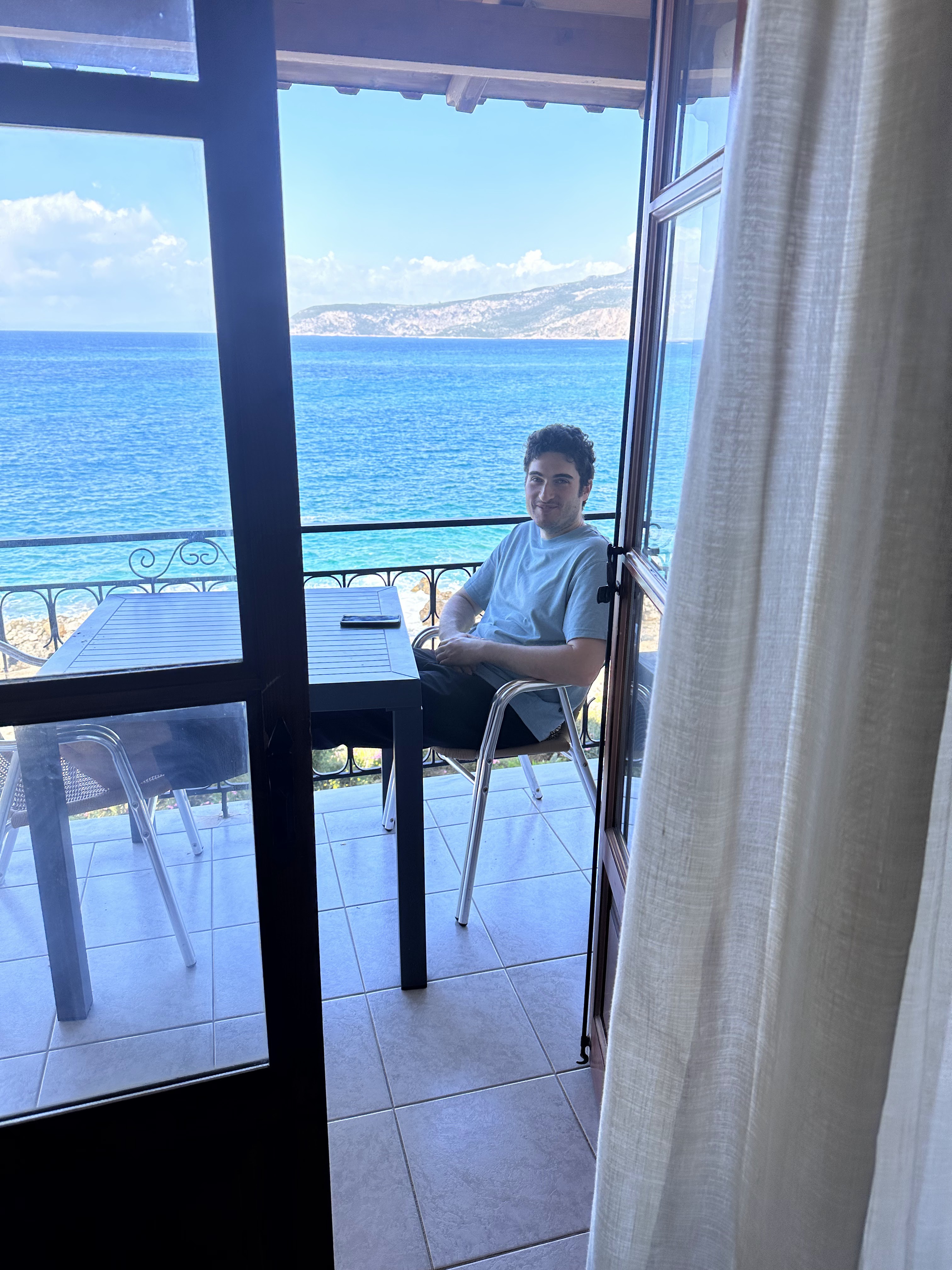
We took our laundry to the front desk to see about getting it laundered, while we were out for the day. Lizy started explaining all the rules for her laundry. These need to be separated, these need to be hung up, and these … The man at the front desk began to look more and more worried. I felt for him. These were very complicated instructions.
“Actually, can I just go down and see the machines,” asked Lizy.
“We don’t usually let guests into the laundry room, but I guess this is fine.”
So we went down to the basement where the laundry machines were. Lizy started examining the different machines. Now she could let the man know exactly what settings she wanted for her different loads. The man looked more and more confused, and I was worried for him. Lizy ended up putting in her first load and starting the machine. He put in the second load while we were gone. He ended up putting nothing in the dryer and brought up all our wet laundry with a drying rack. Better safe than sorry, I guess. Lizy was very happy to be able to see the laundry machines and the whole experience really assuaged some of her anxiety.
After starting the laundry we headed south to see the sights of the Mani Peninsula.
I’ll say a few notes concerning the Mani here. This info and any info I might say in this section, unless otherwise attributed, is probably from Mani: Travels in the Southern Peloponnese by Patrick Leigh Fermor. The Mani is the middle of the three southern peninsulas of the Peloponnese. It’s often divided into two parts: the Inner Mani and the Outer Mani, roughly corresponding to the north and the south. It’s terrain tends to be very rugged especially in the Inner Mani. The mountain rage of the Taygetos runs down the centre of the peninsula soaring in the sky in the Outer Mani and dropping off in height towards the ocean in the southern tip. Because of how mountainous and barren the terrain is, it was often the last part of Greece conquered by the empire of the day. In fact parts of the Inner Mani were never conquered by the Ottomans. It was often a haven for fugitives from various conquests and there were many waves of immigration following different imperial conquests.
The Mani is known for it’s distinctive towers made of rock, the most abundant resource of the region. The towers look like they’re from the Middle Ages, but most of them were built in the 19th century. Because of the remoteness of the region, the Maniots continued building Medieval towers after the rest of the world had moved on. As we drove down the coast I kept pointing out towers to Lizy. She kept saying that she didn’t think they were authentic towers. “That has to be a modern tower built in the style. Built for the tourists. You can tell it’s not real because of how new the rocks look,” she would say.
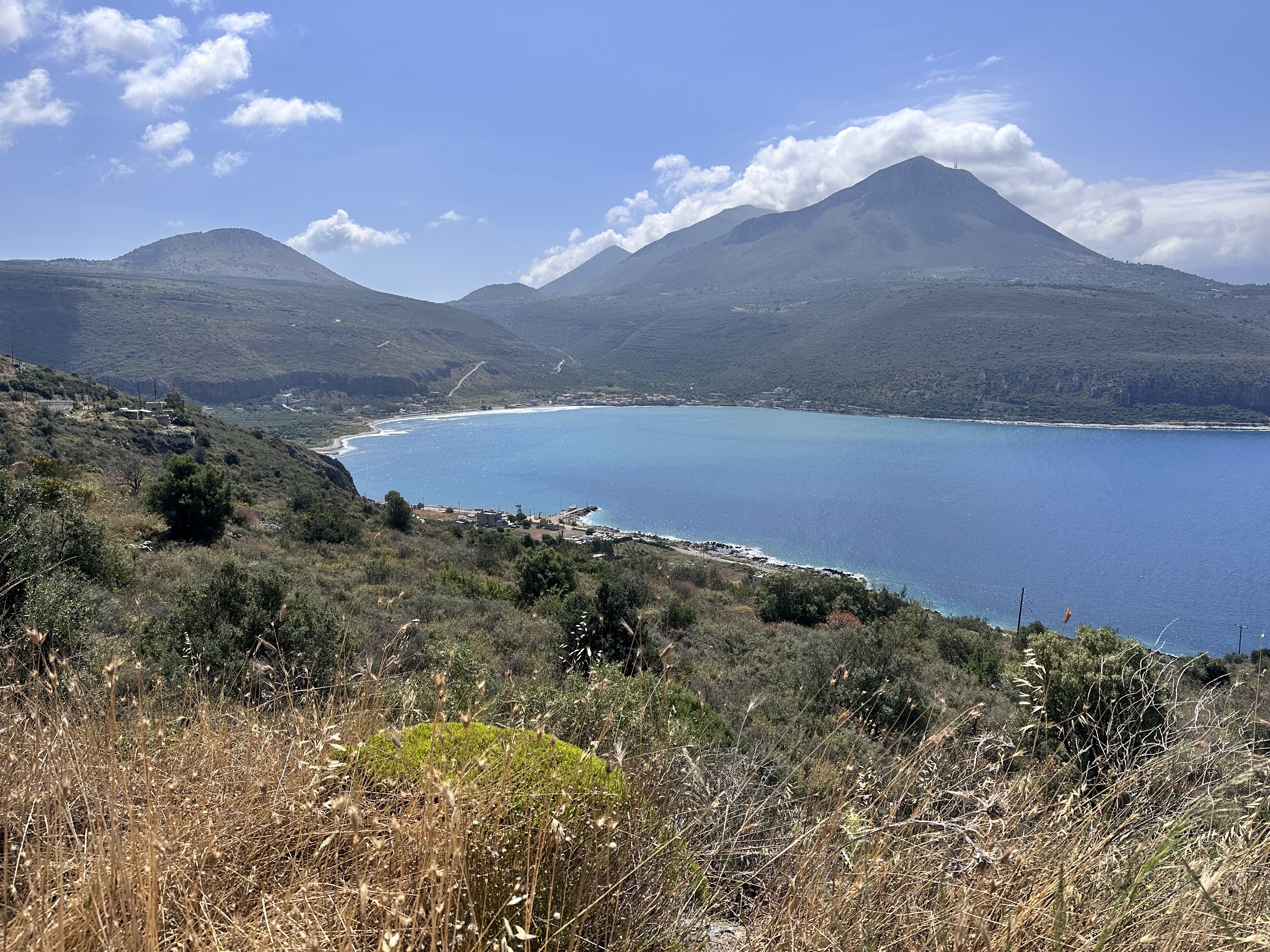
We drove without stopping to our first stop, the Diros Caves. The road to the cave winded down from a village on a hill right down to the water. The ticket booth was most of the way down the road. There were flags put up from a bunch of different countries implying this was an internationally recognized cave, I guess. The man at the ticket booth spoke very broken English. I asked if they had English guides for the cave. The man said no, but I figured how much could the guide say anyways. It was really about the spectacle of seeing the cave.
After buying our tickets we drove the rest of the way down the road. At the entrance to the cave some tourists were walking out onto some wooden walkways along the cliff to see the views of the coast. There was a closed cafe and a closed gift shop. We couldn’t figure out why they were closed. A the entrance we sat on a bench with other tourists. There was a man giving out life jackets and dividing people up into groups. He was putting greeks with other greeks, as I realized later, so they could have tours where the guide talked. He put us with people from England, so our boat gondolier didn’t have to waist his breath talking on deaf ears. The one thing our gondolier could say was “Cap-eee-tan”, pointing for Lizy to go to the front of the boat. This made her quite happy. After everyone got onboard our boat, our gondolier pushed off and began paddling us around the cave.
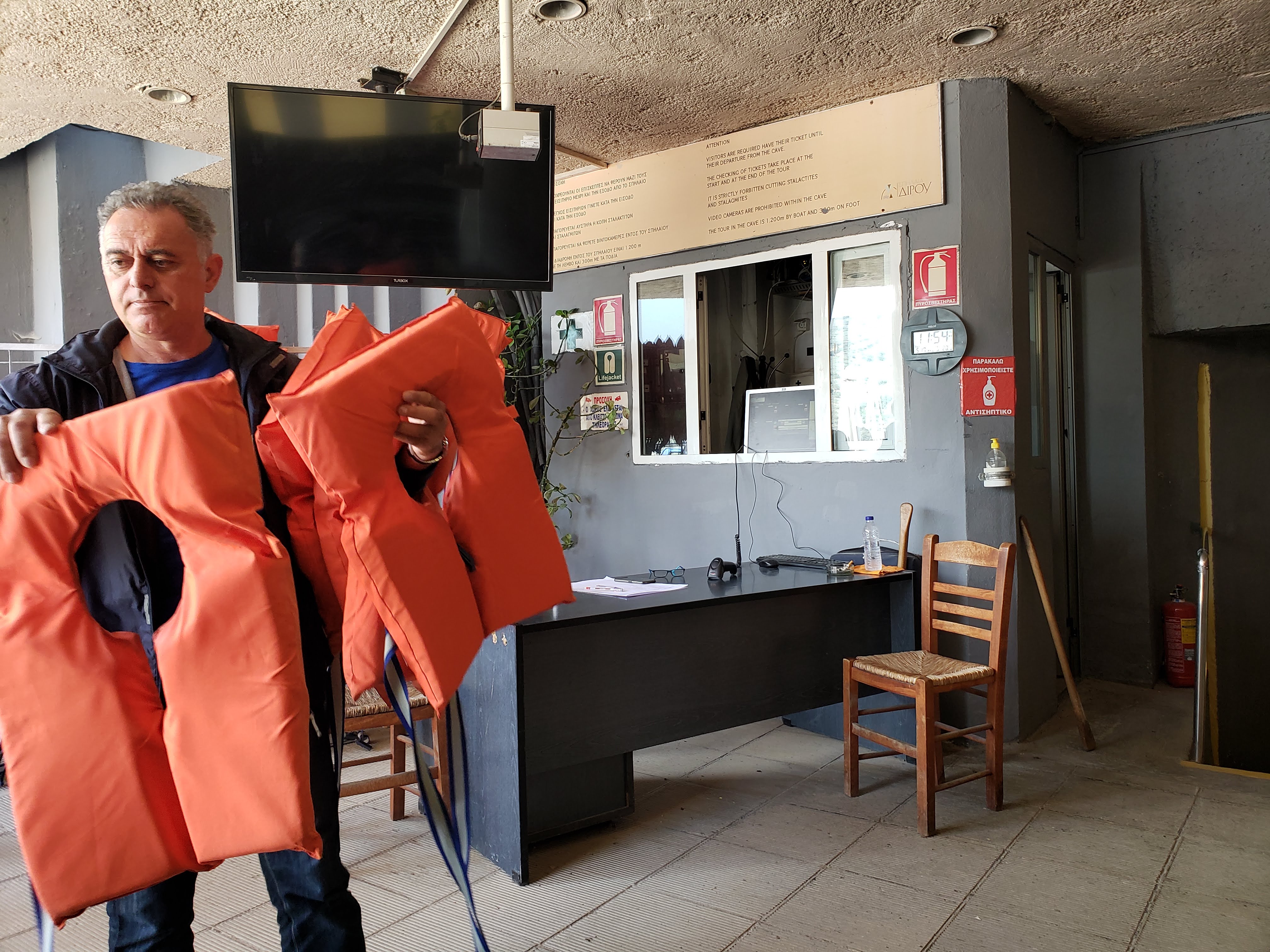
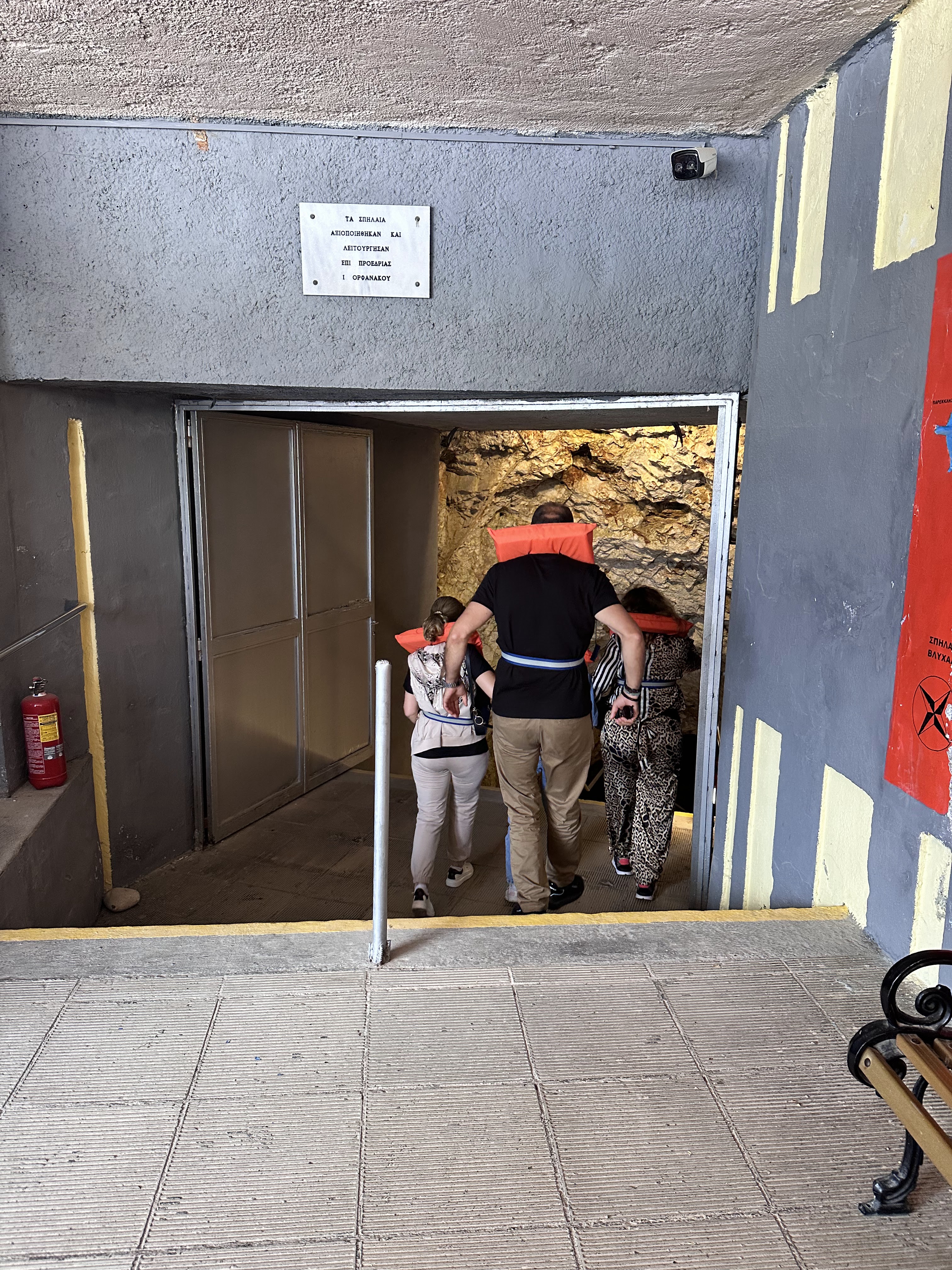
The caves alternated between small passageways and larger open spaces. On the roof of the cave were huge stalagmites, which were reflect almost perfectly by the clear water, so that it appeared there were stalagmites under the water. Some of the rock had a red hue to it, probably from iron. There was also some paint residue from boats hitting into the rocks at the narrowest parts. Our boat never hit a rock, our guide must’ve been very experienced. Wiring was run under the water through the cave to power lights. I couldn’t help but wonder what would happen if we lost power. Could our guide get us out in the pitch black.
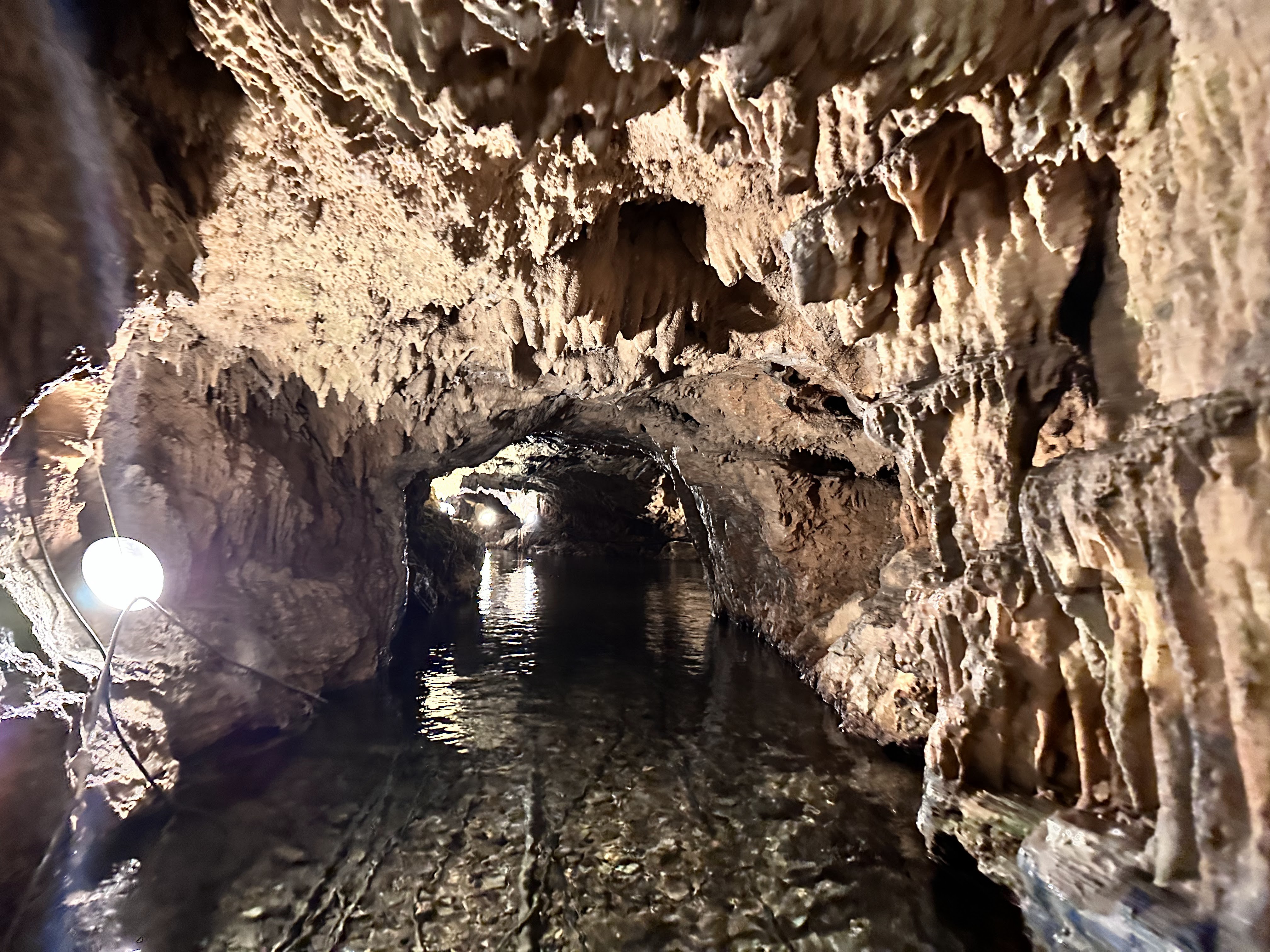
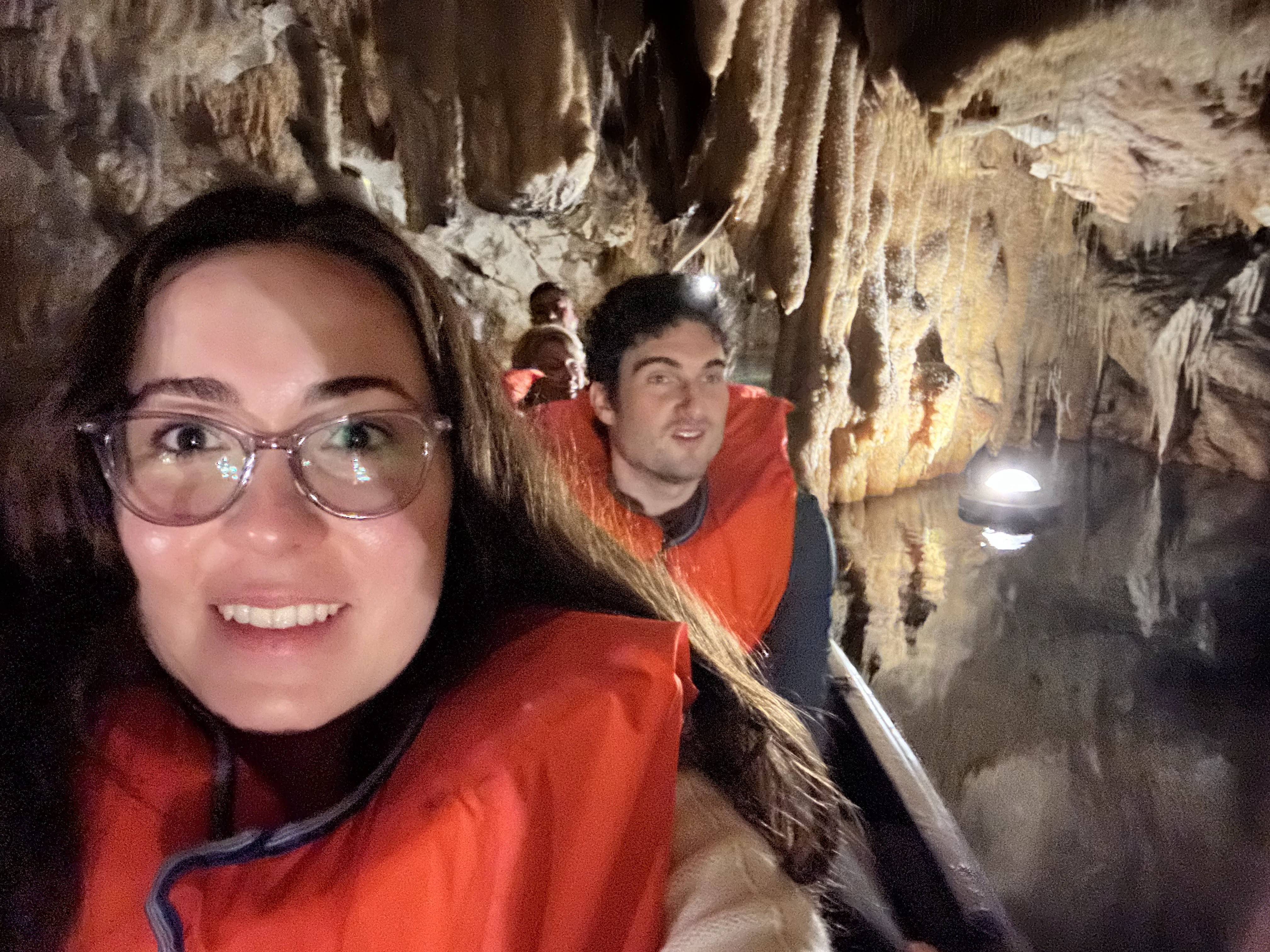
The caves were first excavated in the 1970’s. Remains of neolithic burial sites have been found and it is believed that these people believed the cave system was a passageway to the underworld. We did not see any burial sites. I saw a rock that looked like a baby and Lizy saw a bat. But no ancient human remains.
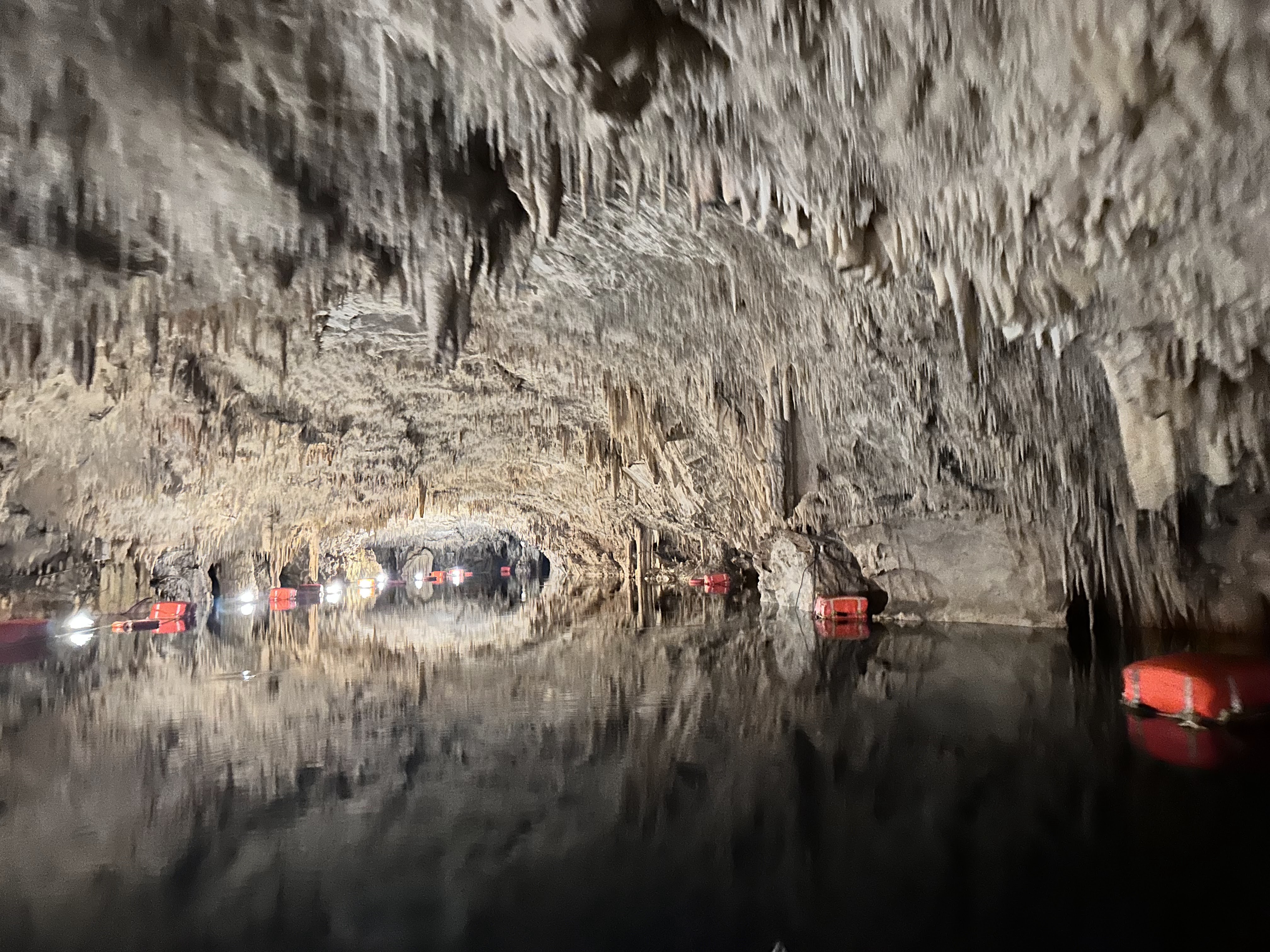
The caves seemed to go on forever. We never saw or heard another boat, while on the tour, which surprised me because I saw quite a few leave right before us. Maybe there were different routes. Then all of a sudden we were back. It did not look like we were coming back to the entrance until the final passageway opened back up to the mouth of the cave.
After we left the cave, on the road back to the town we stopped at a small pottery shop on the side of the road. The man running the shop was a big man with a big beard. Extremely friendly. He seemed to be very touched by Lizy’s story of how her parents met in Greece. He played sort of a game with her when she asked what things were. He made her guess what they were.
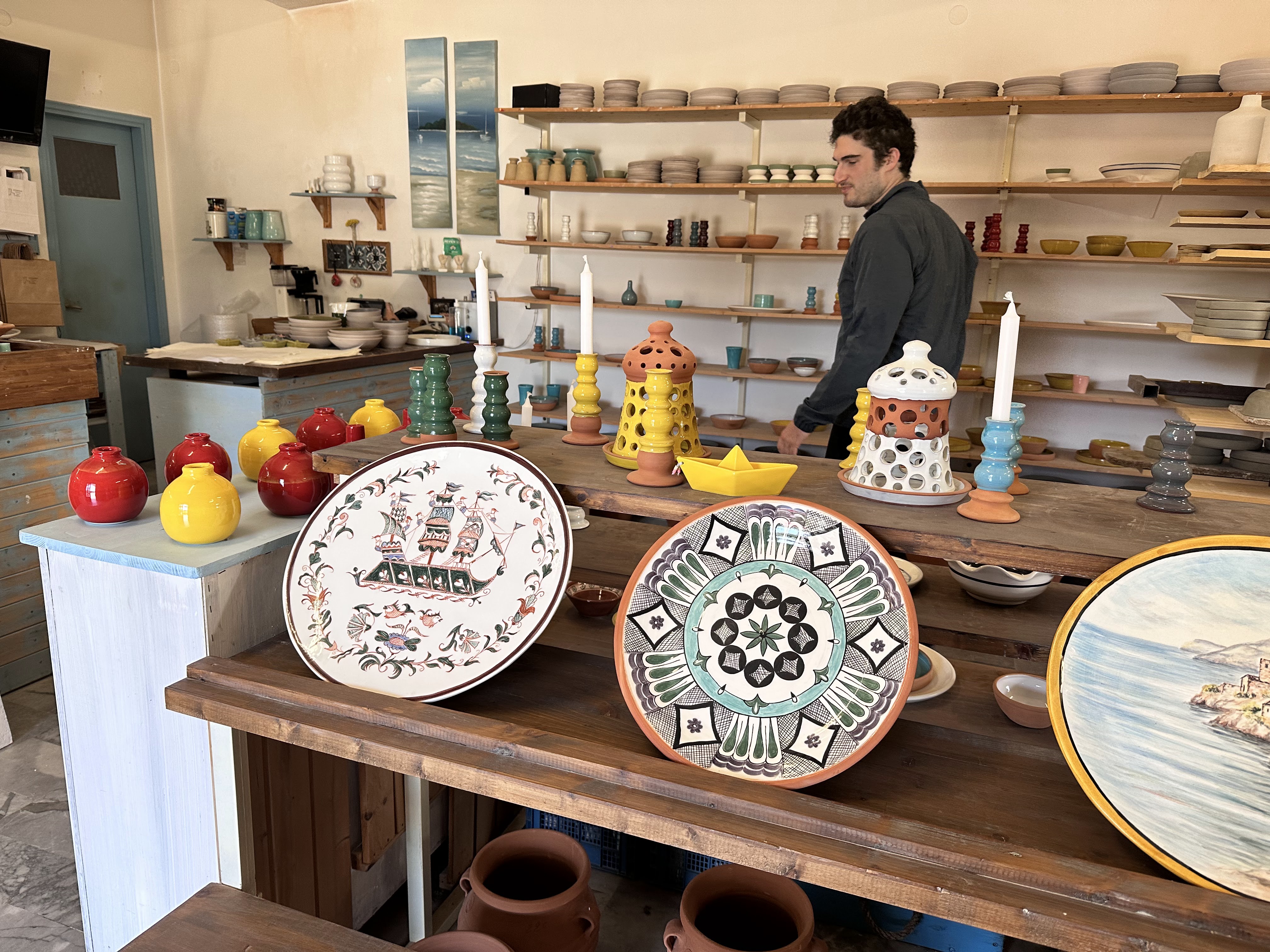
“Candle holders?” she guessed.
“No, ash trays,” he replied
“These are candle holders?”
“A little oil and you burn it.”
“Oh they’re for incense. Well these must be candle holders.”
“Yes, those are candle holders.”
“And what are these boats for?” she said pointing to minimalist boats made of clay that looked like the kind you’d make of folded paper.
“We give those to our friends as good luck omens.”
Lizy picked out candlesticks for her mom, an incense burner for her cousin, and a boat for herself. As he was ringing us up and wrapping our pottery in bubble wrap he talked to us about the Mani.
“You have to drive south, that’s the real Mani.”
“We like Kardamili. That’s where we’re staying.”
“Kardamili is not the Mani. The Mani is south where the land is barren. The are many castles. You may like it. You many not. But Kardamili is not the Mani.”
Seemed like Maniots from the Inner Mani did not consider the Outer Mani the real Mani. He recommended a town called Vathia for us to visit. He said the taverna was good. We asked which one. He told us it was the only taverna in Vathia.
When he finally got to wrapping at the boat, he asked Lizy if she was buying it for herself or for someone else. “I think it’s for us.” “Then I want to give this to you as a gift. So you always love each other and have luck in your marriage together.”
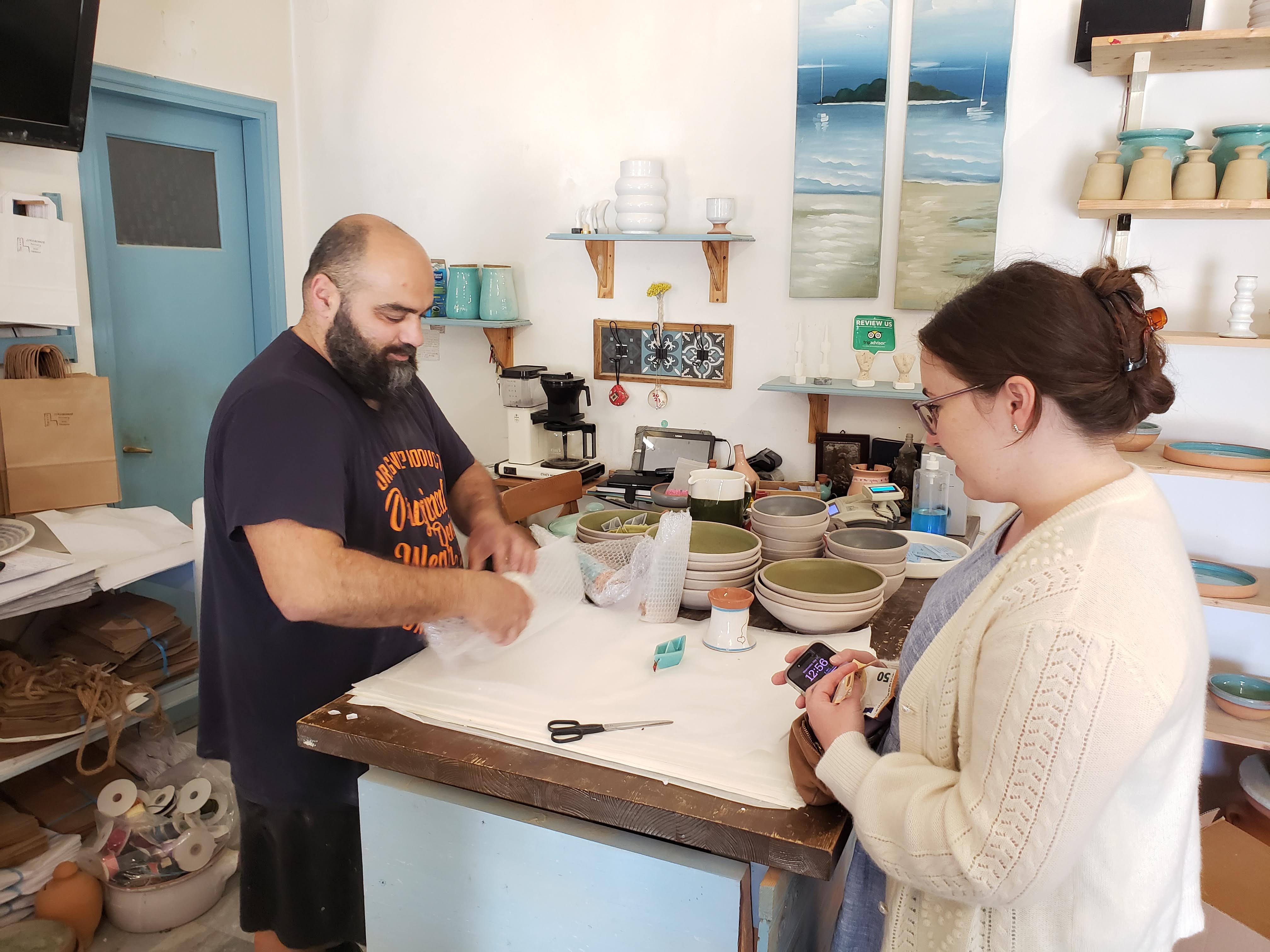
We took his advice and drove to Vathia to have lunch. As we drove further south the Taygetos mountains that towered to the left of us on our drive began to become shorter. The land became barren of vegetation. The towers became more numerous and in areas with towers there were more of them. It looked like the towers were built on top of each other.
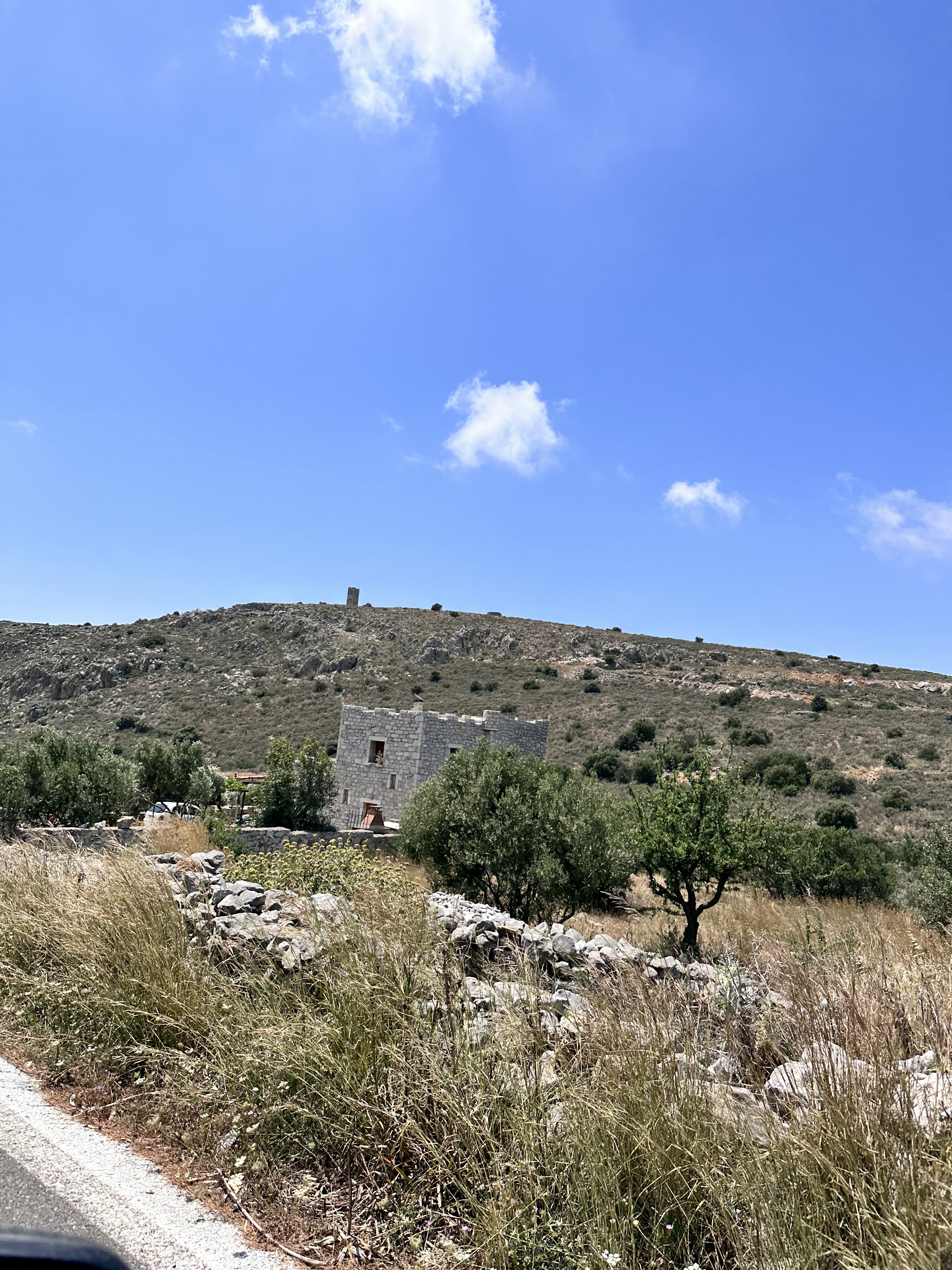
In the Inner Mani clans within towns would often get into feuds with each other. One clan would build a tower mid feud just next to the other clan’s tower. They would fight like this until one of the clans surrendered and then they’d leave the village and start another one. This is why there’s so many village in the Inner Mani with so many towers on top of each other.
Vathia was a small Inner Mani village on top of a hill overlooking the ocean. Like other small Inner Mani villages it had mostly been depopulated. It looked as if there were a few holdouts as we saw a few satellite dishes. We had lunch at the taverna across the street from the town. It was excellent.
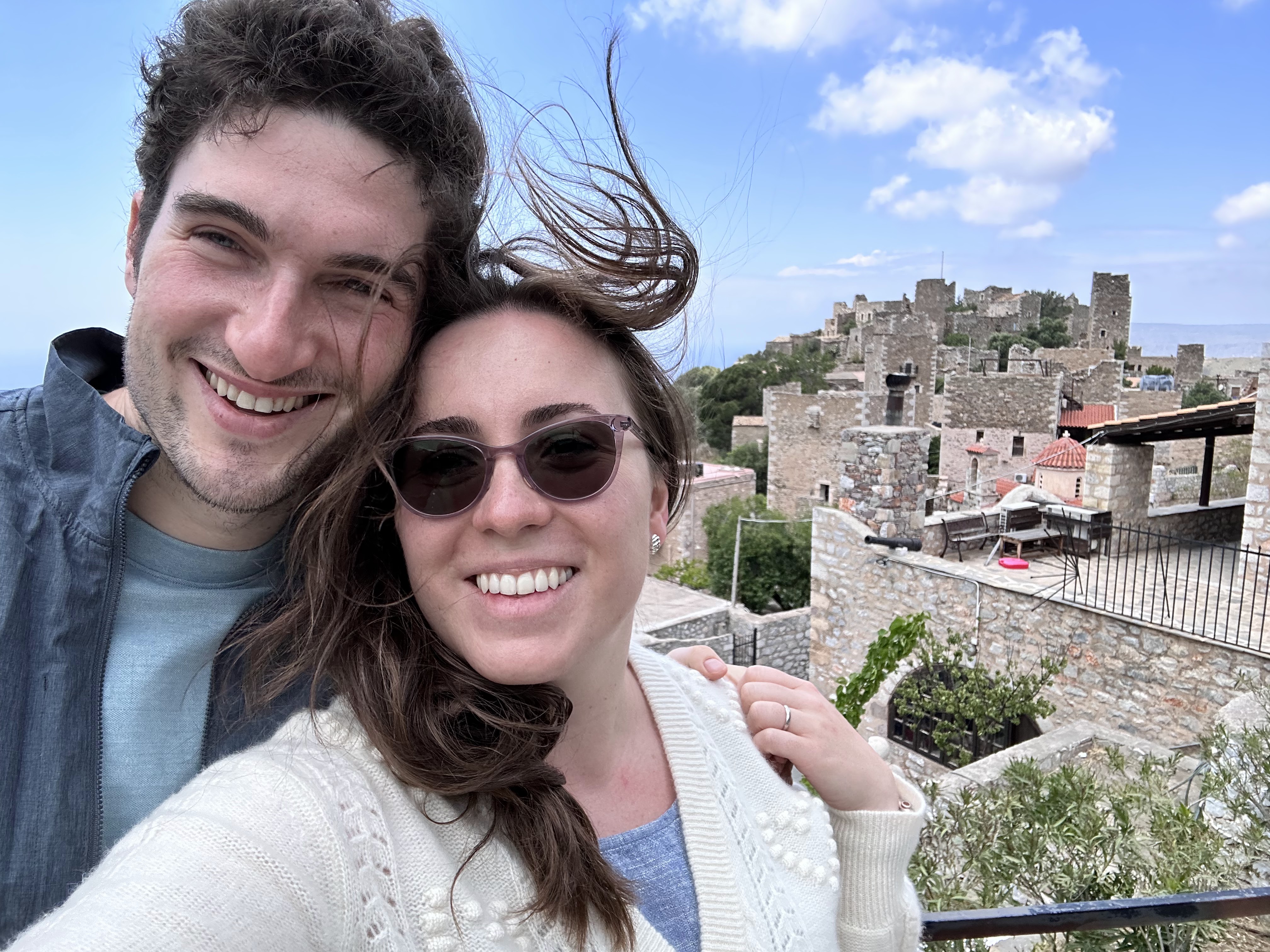
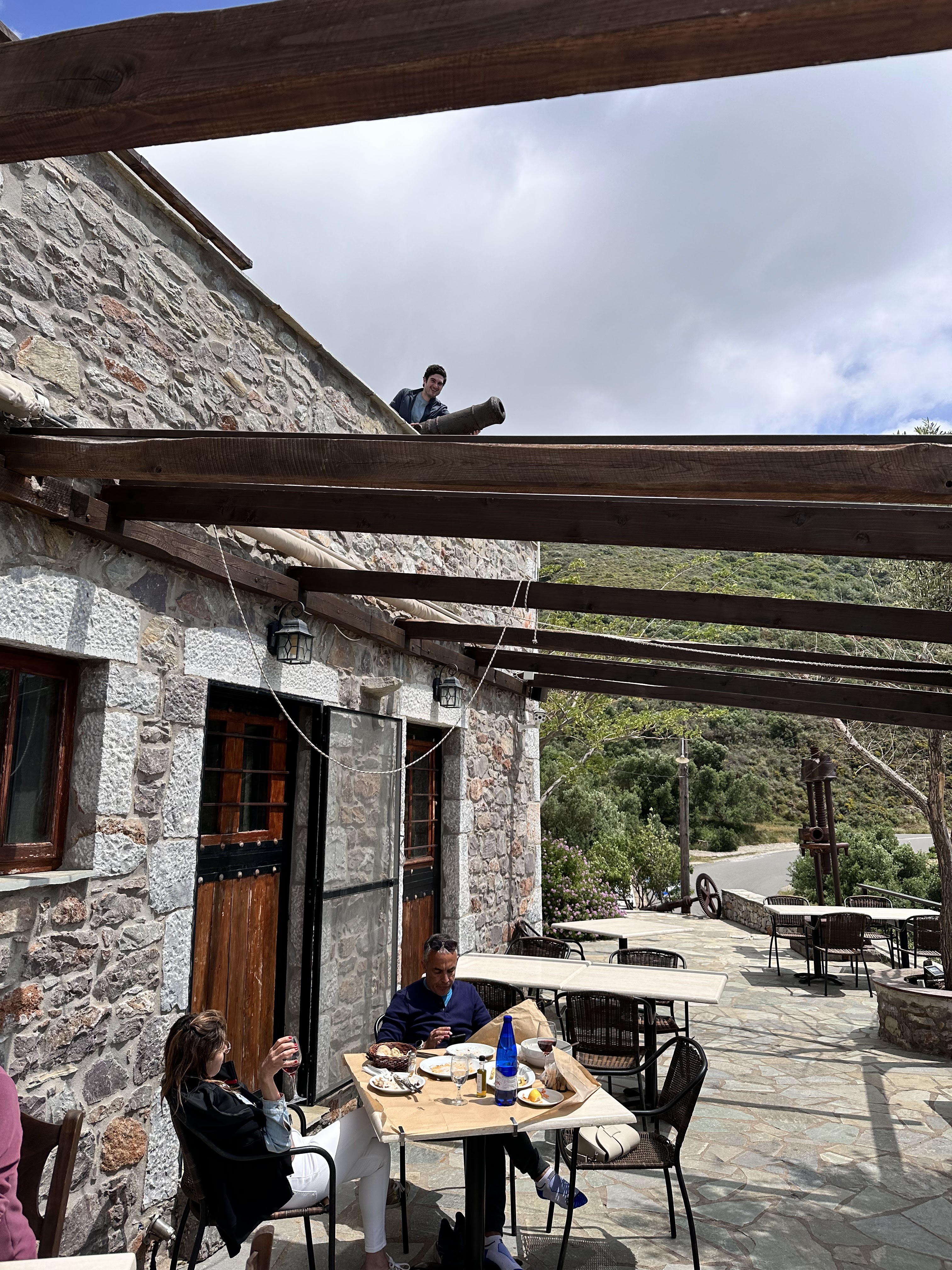
Afterwards, we walked across the street into the town to walk around. It looked like some of the towers had been half refurbished then abandoned again. Some had abandoned tiles or half drunken beers. Some of the houses had locks and one gate had the name of possibly a hotel. We later found out that there had been an abandoned hotel project. The plan was to convert a portion of the town to villas that could be rented to tourists, but something had come up with the group backing the project. The person telling the story wasn’t sure of all the details, but it seemed to have something to do with the bureaucracy of the government.
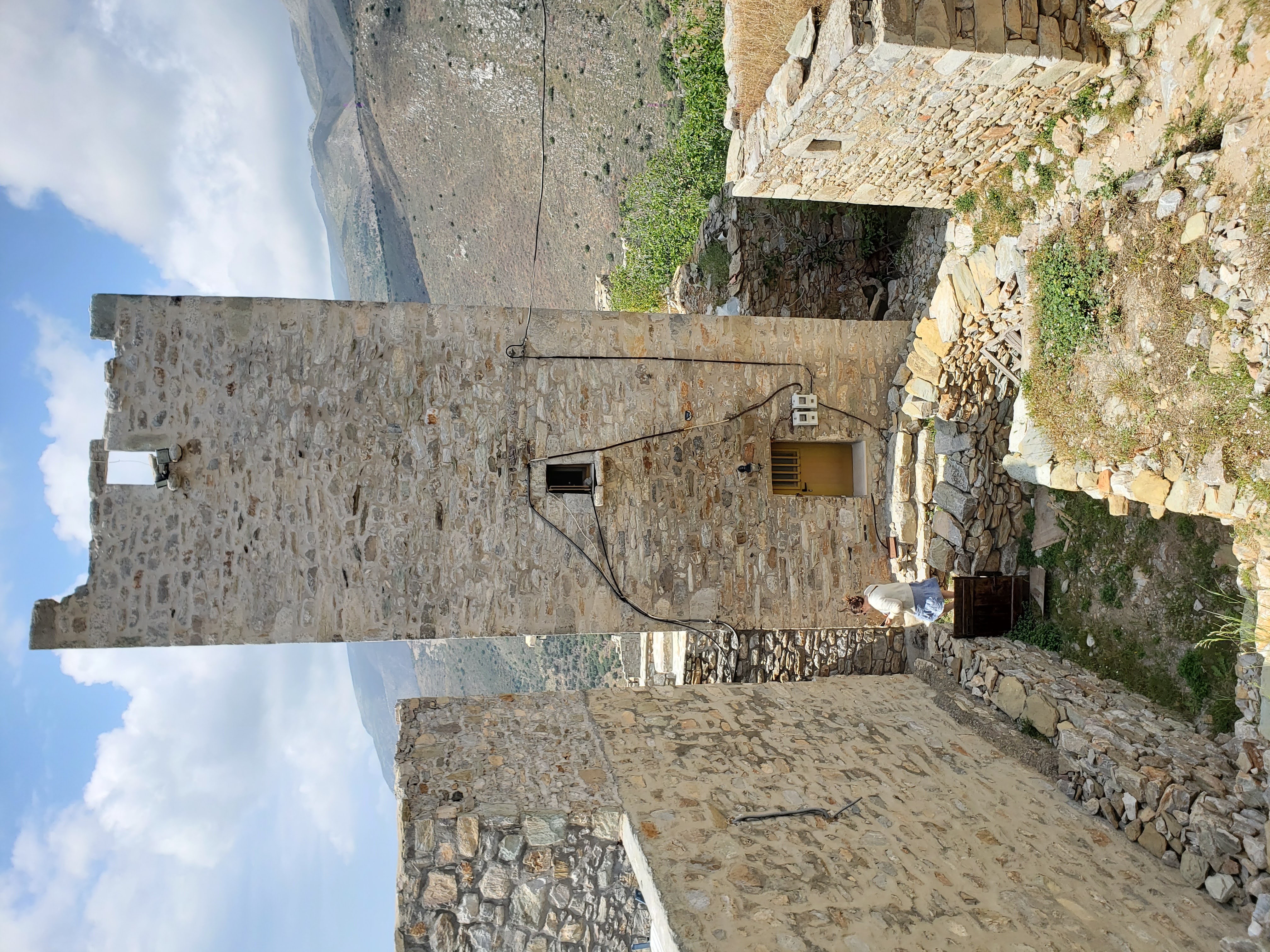
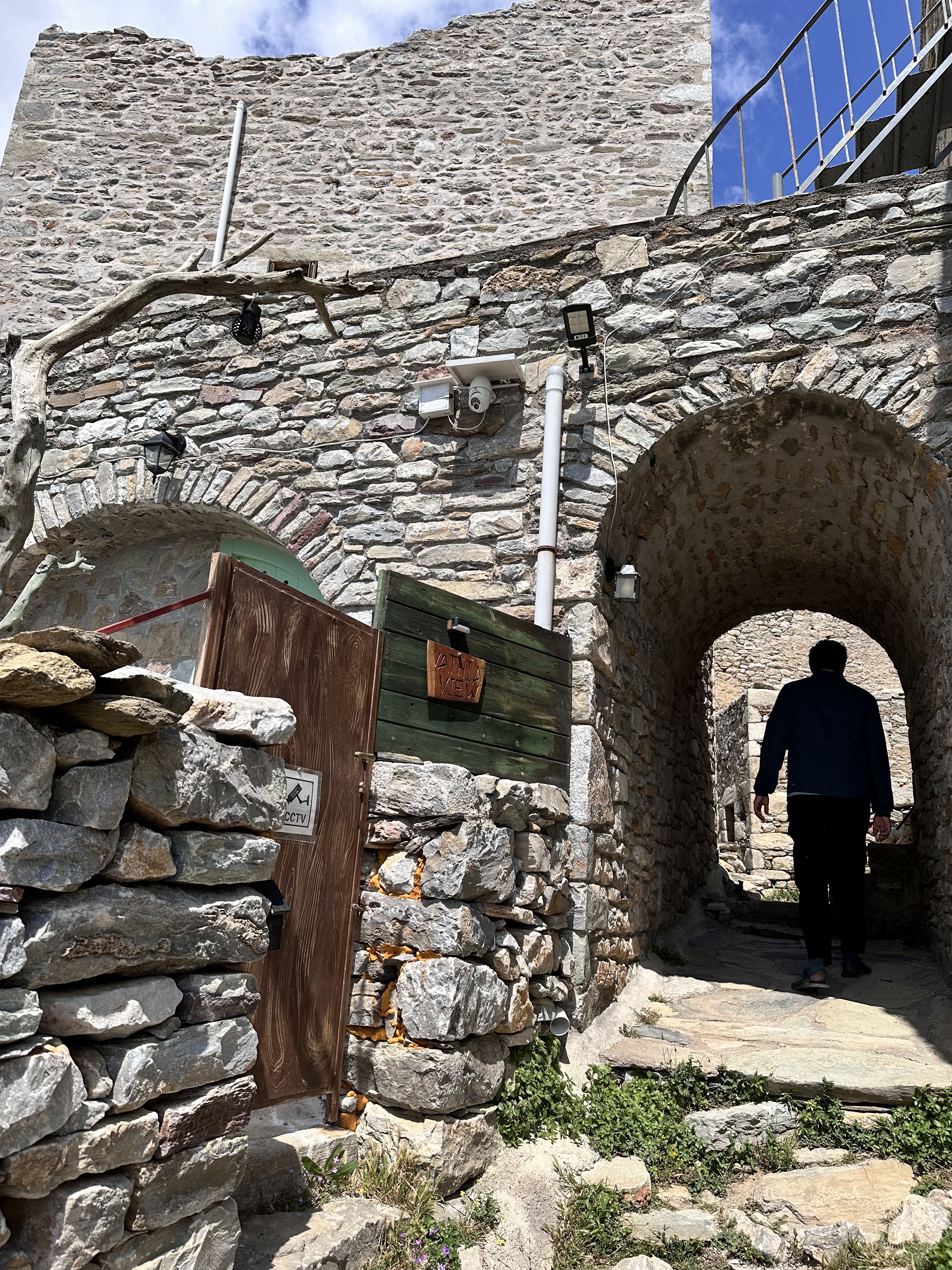
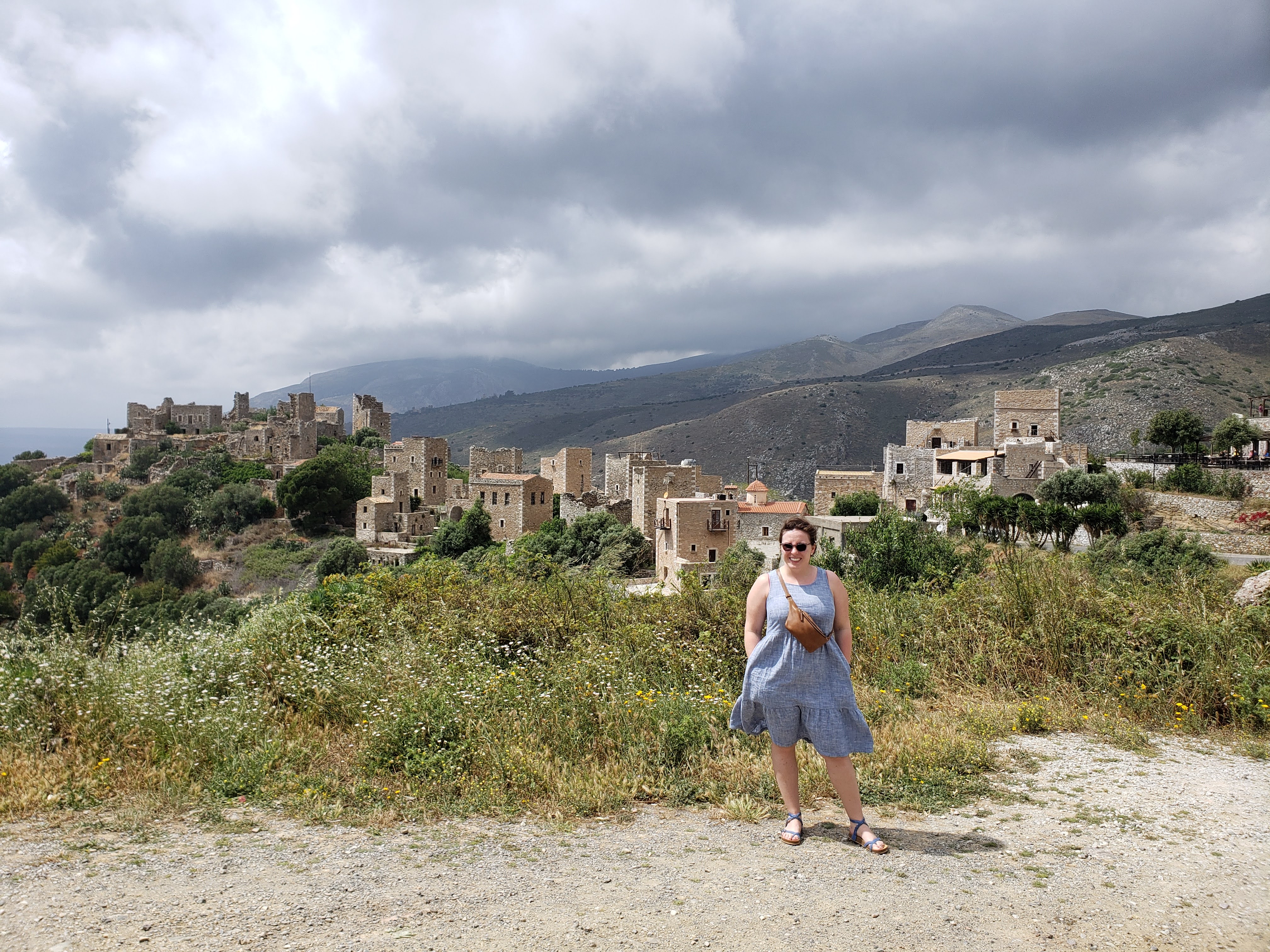
Next I drove up to one more town. The road up to the town was the most perilous road of any we had driven on. It was narrow and bordered a cliff most of the way. To my great surprise about 3/4 of the way to the town we bumped into a group of cows on the edge of a cliff. I had assumed the village was abandoned, but there must have been a herder for the cows. When we got to the top of the road and into the town, some of the structures did look like they had been updated for modern living, but there were no people or cars to be seen. There was a small church in the centre of the town. I tried to give a tap to the church’s bell, and accidentally rang it. Still no people came to see what happened. Probably people lived in the cities and came back to the village for some weekends or something. Someone has to come back sometime for the cows at least.
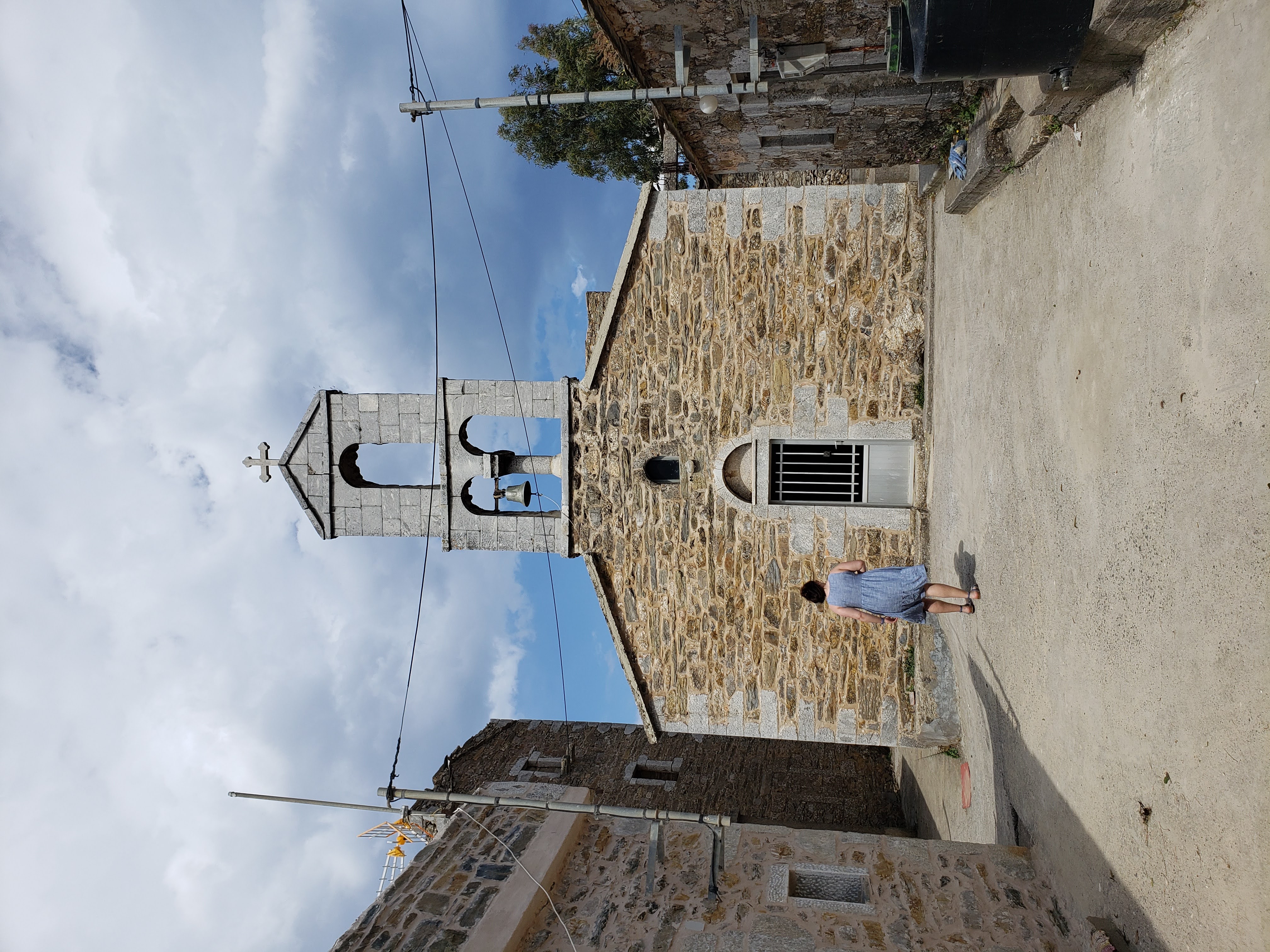
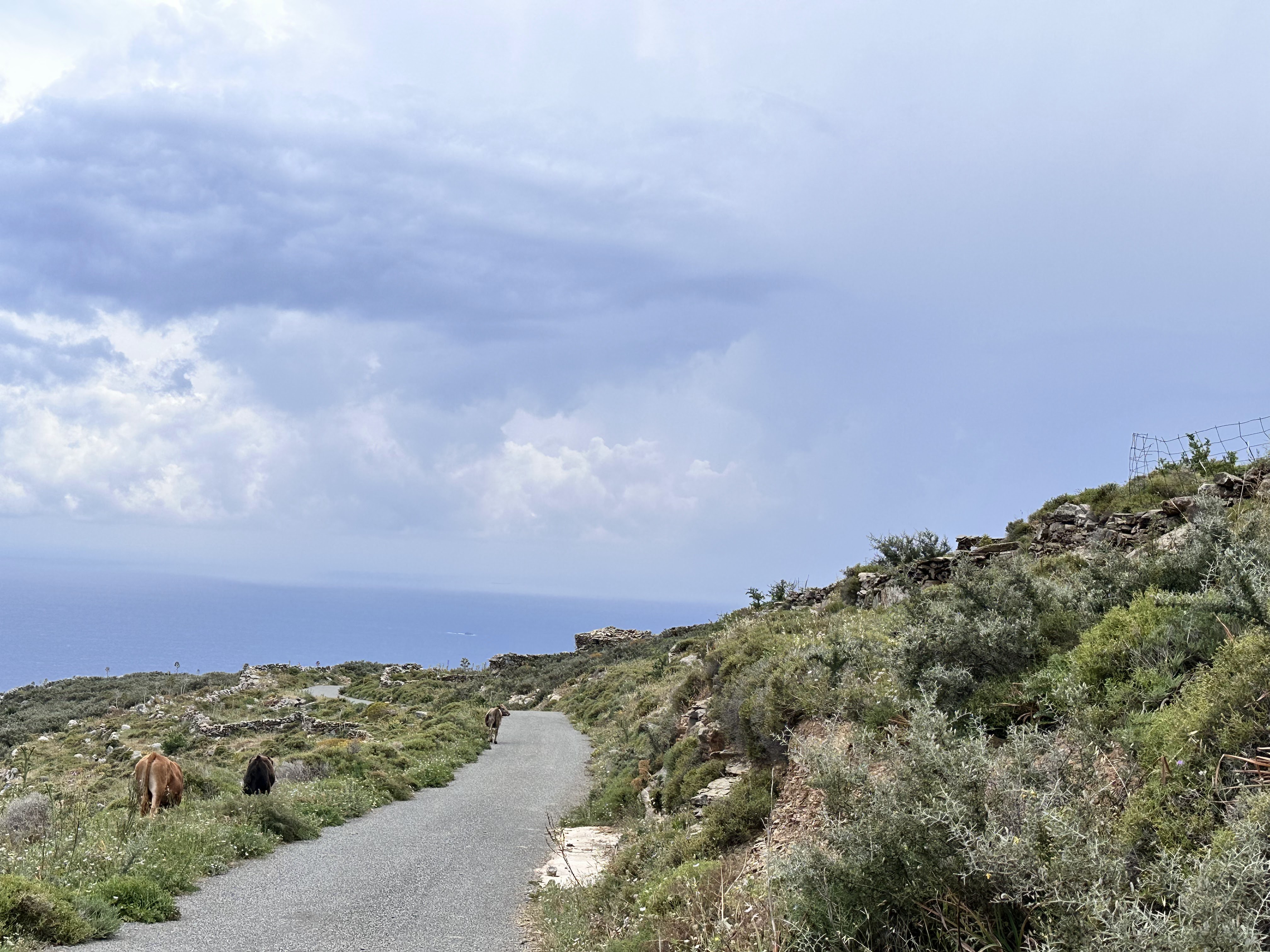
We drove back to Kardamili and swam in the sea near our hotel. There was no beach but they had a little dock set up with a ladder and you could swim to the beach.
We went to Lela’s for dInner. The food was so-so, but the proprietor told us an interesting story about the abandoned building beside the restaurant. It used to be an olive oil press, but fell into disuse. The owning family was now large. At least 8 people. All they do is argue, so they can’t make a decision of what to do with the property. So it goes with large families. If it was on the market it would be the most expensive, most coveted property in all of Kardamili.